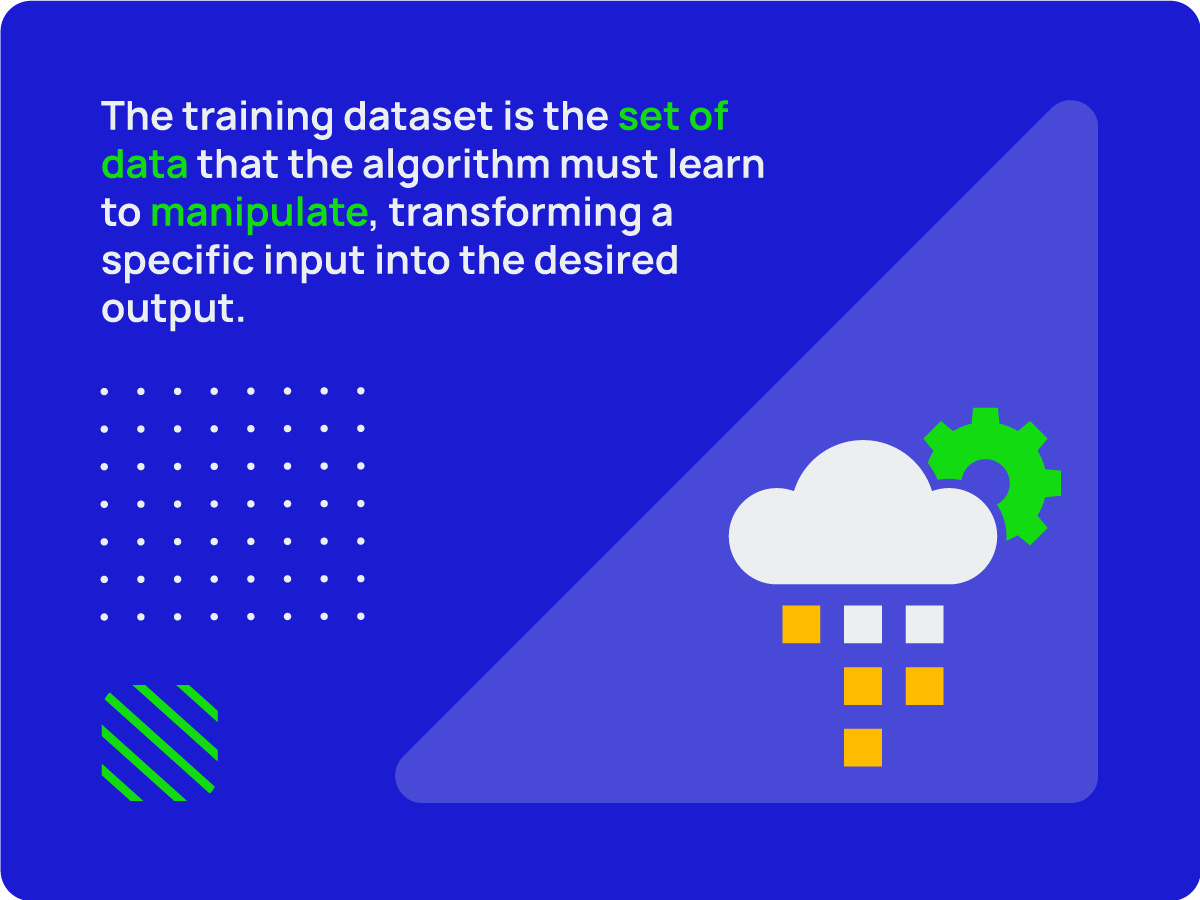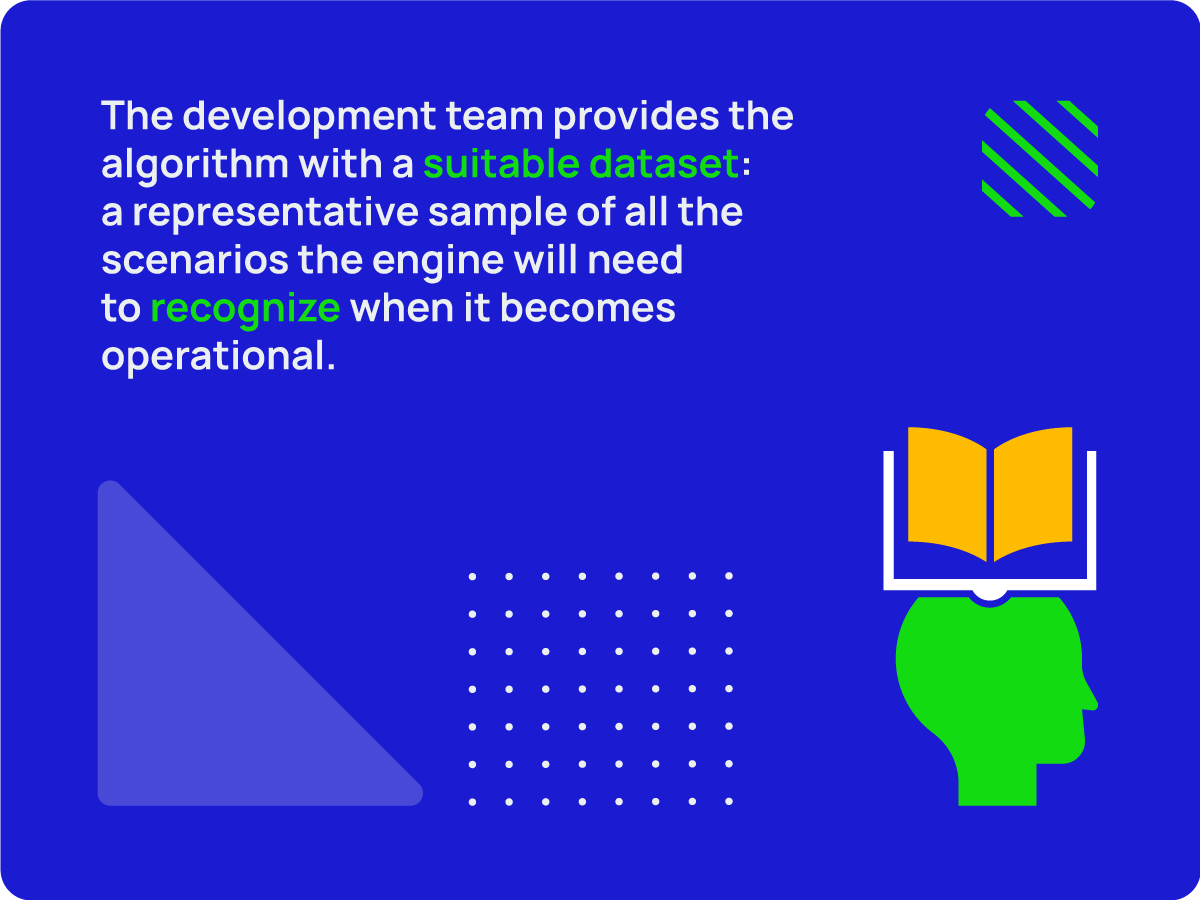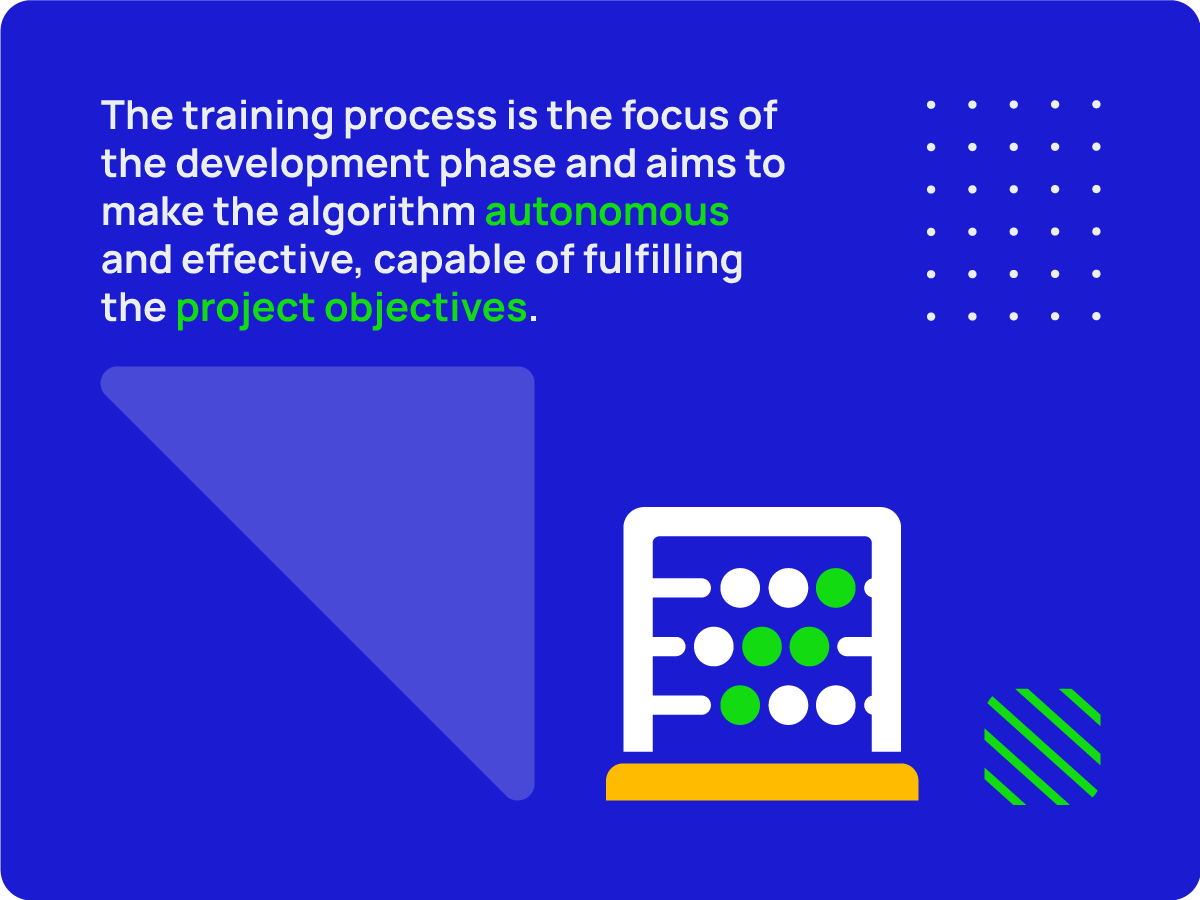When developing an AI algorithms it is crucial to know what we want to achieve.
The training process is the focal point of the development phase and involves making the algorithm autonomous and effective, i.e., capable of fulfilling the project objectives.
When developing an Artificial Intelligence algorithm, it is essential to meet a basic requirement: having access to a sufficiently large dataset.
The dataset is the collection of input and output data that the algorithm will handle. If the client possesses the dataset, our development team creates AI software that autonomously learns to transform the inputs into outputs.
This process is called training and is the focal point of the development activity.

What if I don’t have the dataset?
If you do not have the dataset, our team can create a synthetic dataset for you. This involves generating input and output data using the limited information available and sampling all relevant parameters. Through recognition technologies, we can transform products into a set of images, effectively building a dataset from scratch.
This process is particularly suitable for companies that sell or produce standardized products.
Training an AI algorithm
As seen in the previous chapter, “Design your AI Software,” during the design phase, we establish the purpose of the algorithm and the methods it should follow to achieve the desired results. The development activity is, therefore, guided by clear strategic directions and aims to train the algorithm according to a well-established process and objective.
The ability of the algorithm to achieve project objectives is closely related to the dataset, i.e., it depends on the type and quantity of data available to the engine. An algorithm always responds, but its quality and relevance to the client’s requests depend on the dataset.

Requirements for the training dataset
The dataset must have some essential qualities:
- Extent: It must contain a large volume of data, sufficient to allow the algorithm to train extensively, refining its ability to achieve results.
- Variety: Ideally, it should encompass all or most scenarios we want the algorithm to recognize.
- Completeness: It should have all the necessary parameters to interpret the input correctly and translate it into the expected output.
Every AI algorithm performs a task effectively when it has the necessary information, just like humans. We can all provide answers, but how we respond depends on the quantity of data, parameters, and relevant information we have. That’s why we talk about Artificial Intelligence, as the algorithm simulates the reasoning logic of humans.
The training of an algorithm is, therefore, comparable to human education: the more we learn and gain experience, the more competent we become in performing specific activities.
The goal of the development phase
In AI projects, the goal of the development phase is to make the algorithm autonomous, so that when it receives an input absent from the training dataset, it can still process it and produce a correct output.
To train the algorithm, we must choose a suitable mathematical model for the task, and identify the parameters for the training. Then, the algorithm gets a complete training dataset containing input and output pairs. Training requires significant hardware resources, usually with high-performance GPUs, and can last from some hours to several days.

Once the training is complete, the development team performs a validation process. This procedure involves testing the algorithm with a new and unseen dataset to verify its ability to fit (transform the input into the correct output).
If the results are satisfactory, the process moves on to the functional testing phase and subsequent publication. However, if the results are not up to the mark, the development team iterates by returning to the training phase and modifying the model, parameters, or dataset.
Validation is a quantitative test that occurs automatically to ensure that the system works as expected. On the other hand, functional testing is a qualitative process conducted by an operator using a limited number of inputs, aiming to expose the algorithm to borderline situations.
